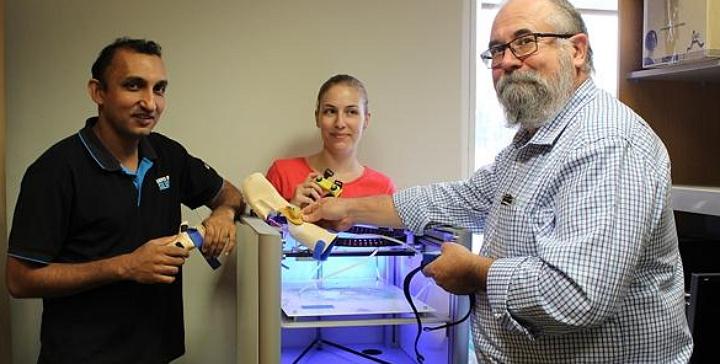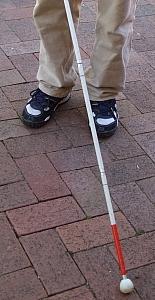A team of researchers at Curtin University in Western Australia have devised a low-cost and portable technology which used 3D printing to assist patients with their rehabilitation following joint injuries and mobility disabilities.
The project was led by the Curtin University Department of Electrical and Computer Engineering, and it used sensors embedded during 3D printing into rehabilitation equipment worn by patients like braces and supports.
The rehab equipment has inertial measurement tools embedded inside which can read and interpret acceleration and angular velocity caused by movement in three dimensions.
“We embed these into the normal braces or casts people have on the limb in question,’’ says senior lecturer Dr. Iain Murray. “We can then log and examine how the person is moving.”
A good share of Murray’s work has centered on what’s called Assistive Technology, and his role is to act as main contact point and coordinator of the research. In the past, he’s focused on eLearning modalities for the vision impaired, and he’s used 3D printing in his work on those projects as well.
“One of our main focuses at the moment is on the treatment and here we can watch how people are doing their physiotherapy exercises, see how long they are doing them for and because we have modeled the movement we can see if they are doing the exercise correctly,’’ Dr. Murray says.
Dr. Murray says the technology is used to measure the efficiency of treatments, and his team has completed a number of trials which used 3D printing to build the splints and embed the sensors in one operation.
“So rather than having to hand-make these splints and devices – the rigid ones – that you put on people, we scan the limb using a 3D scanner and then we 3D print it out and the sensors are embedded into the device after printing,’’ Dr. Murray says. “We just print the splint out.’’
 Used to treat injuries and chronic disorders like cerebral palsy, muscular dystrophy, and motor neuron disease, Dr. Murray and his team are working with Princess Margaret Hospital for Children to begin trials of the system for children with cerebral palsy.
Used to treat injuries and chronic disorders like cerebral palsy, muscular dystrophy, and motor neuron disease, Dr. Murray and his team are working with Princess Margaret Hospital for Children to begin trials of the system for children with cerebral palsy.
According to Dr. Murray, while work like theirs has been done in the past, the team’s use of 3D printing technology makes the devices cheaper — and portable.
“They can wear it all the time so we can get much longer login periods,” Murrays says. “We can examine the data in more detail, and our system costs a few hundred dollars.’’
Murray also worked on a project to embed sensors within the classic aid for the visually impaired, the white cane and a project to build a 3D printed, graphical reading device as well.
Have you heard about any other projects which use 3D printing to embed sensors for medical devices? Let us know in the Sensors Embedded In Casts and Braces With 3D Printing forum thread on 3DPB.com.
Subscribe to Our Email Newsletter
Stay up-to-date on all the latest news from the 3D printing industry and receive information and offers from third party vendors.
Print Services
Upload your 3D Models and get them printed quickly and efficiently.
You May Also Like
3D Printing News Briefs, July 2, 2025: Copper Alloys, Defense Manufacturing, & More
We’re starting off with metals in today’s 3D Printing News Briefs, as Farsoon has unveiled a large-scale AM solution for copper alloys, and Meltio used its wire-laser metal solution to...
3DPOD 260: John Hart on VulcanForms, MIT, Desktop Metal and More
John Hart is a Professor at MIT; he´s also the director of the Laboratory for Manufacturing and Productivity as well as the director of the Center for Advanced Production Technologies....
3D Printing News Briefs, June 28, 2025: Defense Accelerator, Surgical Models, & More
In this weekend’s 3D Printing News Briefs, 3YOURMIND was selected to join an EU Defense Accelerator, and PTC has announced model-based definition (MBD) capabilities within Onshape. Finally, a study out...
EOS in India: AM’s Rising Star
EOS is doubling down on India. With a growing base of aerospace startups, new government policies, and a massive engineering workforce, India is quickly becoming one of the most important...



































